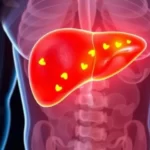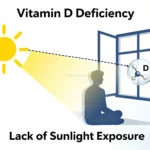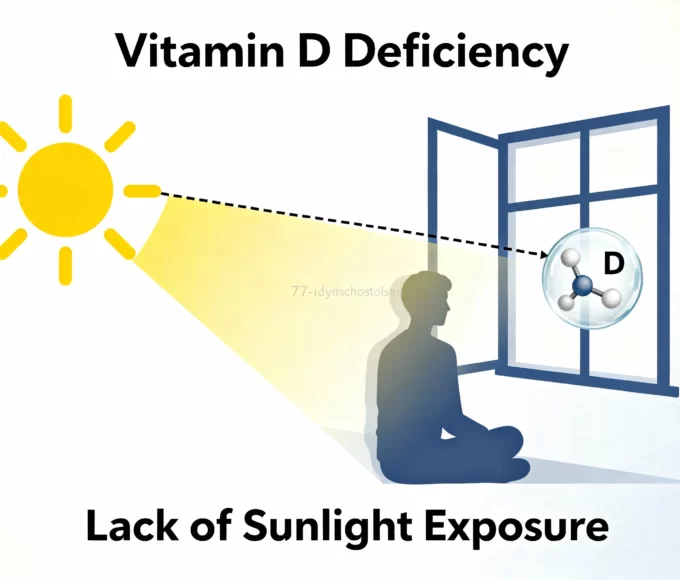Multilevel degenerative disc disease, often abbreviated as DDD, isn’t just a back issue; it’s a condition that can quietly reshape your daily life. Affecting two or more spinal discs, this disorder can lead to discomfort, mobility limitations, and even long-term disability if left unmanaged. In this comprehensive guide, we break down the facts, clear up common misconceptions, and provide practical advice for living with multilevel DDD.
What Is Multilevel Degenerative Disc Disease?
The spine is made of vertebrae cushioned by soft, gel-filled discs called intervertebral discs. These discs absorb shock and allow the spine to move flexibly. Over time, due to natural aging, injury, or genetics, these discs can begin to dry out (a process called disc desiccation), weaken, or collapse.
When this disc degeneration occurs at multiple levels of the spine, it’s referred to as multilevel degenerative disc disease. It commonly affects the cervical spine (neck) and lumbar spine (lower back).
Related Terms:
- Multilevel degenerative disc diseases
- Disc desiccation
- Intervertebral disc collapse
- Spinal degeneration
- Vertebral instability
- Aging spine
7 Common Symptoms You Shouldn’t Ignore
In my practice, patients with Multilevel DDD often report a pattern of symptoms. Recognizing them early can help you get the proper treatment sooner. Here are the 7 key signs to watch for:
Chronic, Nagging Pain: A persistent ache in the neck or lower back that can range from mild to severe.
Pain That Gets Worse with Sitting: Sitting puts more pressure on your spinal discs, so pain that intensifies after sitting for a long time is a classic sign.
Pain That Radiates: Pain that doesn’t stay in one place. It might travel down your buttocks and legs (sciatica) from the lower back, or down your arms and into your hands from the neck.
Morning Stiffness: Feeling very stiff and sore when you first wake up, which might improve slightly after you start moving around.
Numbness or Tingling: A “pins-and-needles” sensation in your arms, hands, legs, or feet. This happens when a damaged disc presses on a nearby nerve.
Muscle Weakness: You might find it harder to lift objects, or you may experience “foot drop” (difficulty lifting the front part of your foot), causing you to trip.
Pain That Feels Better with Changing Positions: Many of my patients find that walking or lying down provides more relief than sitting or standing for long periods.
If these symptoms sound familiar, it’s a good idea to speak with your doctor.
Visual Progression Table: Moderate vs. Severe DDD
| Stage | Disc Health | Symptoms | Imaging Findings | Treatment Focus |
| Moderate DDD | Thinning | Stiffness, mild pain | Early disc space narrowing | PT, posture, NSAIDs |
| Severe DDD | Collapsed | Radiating nerve pain | Herniation, nerve impingement | Surgery, injections, fusion |
What Causes This Condition?
While aging is the primary cause, I’ve found that a few key factors often contribute to the development of Multilevel DDD:
- The Natural Aging Process: As we age, our discs lose water content and become less flexible (a process called disc desiccation).
- Genetics: If your parents had spinal issues, you might be more prone to them as well.
- Injury or Trauma: A fall or accident can speed up the degeneration process in the affected discs.
- Lifestyle Factors: A physically demanding job, obesity, and smoking can all put extra stress on your spine.
Is Multilevel Degenerative Disc Disease a Disability?
Yes, it can be. If pain or nerve issues significantly limit your ability to work or perform daily tasks, Multilevel degenerative disc disease may qualify as a disability under SSDI. Proof of limited mobility, MRI findings, and failed conservative treatments are often necessary.
To meet disability criteria, your case must typically include:
- Objective findings on MRI (e.g., disc collapse, nerve compression)
- Proof that conservative treatments have failed
- Documentation of functional limitations (e.g., inability to sit/stand for extended periods)
“Disability doesn’t just depend on imaging results—it’s about how much your condition affects your life,” says Dr. Elena Ruiz, a spinal care specialist.
Multilevel Degenerative Disc Disease: What’s the Link?
Your facet joints are the hinges that help your spine bend and twist. When both the discs and facet joints begin to deteriorate, the result is a multilevel degenerative disc and facet disease—a double hit that worsens pain and limits movement.
This combination often worsens symptoms and makes movement even more difficult. Common symptoms include:
- Morning stiffness that improves slightly throughout the day
- Pain with twisting, bending, or standing too long
- Grinding or popping sensations in the spine
Treatment usually includes a combination of:
- Targeted facet joint injections
- Core stabilization exercises
- Medications or anti-inflammatories
Diagnosis: Going Beyond the X-Ray
Diagnosing Multilevel Degenerative Disc Disease requires more than just a standard X-ray. A full workup might include:
- MRI to spot disc degeneration and nerve compression
- CT scans for a 3D view of bone spurs or spinal narrowing
- Electromyography (EMG) to assess nerve health
Doctors often use your symptom pattern and physical exam findings, along with imaging, for a comprehensive diagnosis.
Treatment Options: From Conservative to Surgical
Nonsurgical Options
- Physical therapy: Customized stretching and strengthening
- Pain relief: NSAIDs, muscle relaxers, or cortisone injections
- Chiropractic adjustments: Help improve mobility
- Lifestyle upgrades: Posture correction, weight loss, ergonomic furniture
Minimally Invasive Techniques
- Radiofrequency ablation: Disables pain nerves
- Endoscopic discectomy: Removes disc fragments with small incisions
Surgical Interventions
- Spinal fusion: Locks vertebrae together for stability
- Artificial disc replacement: Preserves movement while removing the damaged disc
- Laminectomy: Frees up pinched nerves by eliminating part of the vertebra. Living With Multilevel Degenerative Disc Disease: Daily Life Tips
Managing daily life with Multilevel Degenerative Disc Disease involves more than just clinical treatment; it’s about making small, consistent changes that protect your spine and reduce symptom flare-ups. These practical lifestyle adjustments can ease your routine, improve comfort, and help you avoid long-term complications.
- Use a lumbar-supportive mattress or wedge pillow for sleep
- Opt for ergonomic chairs and monitor height correction
- Use standing desks or adjustable workstations
- Practice daily gentle stretching routines
Even small daily changes can have a significant impact on managing symptoms.
Multilevel DDD vs Single-Level DDD
| Factor | Single-Level DDD | Multilevel DDD |
| Number of discs | One | Two or more |
| Severity of symptoms | Often milder | More complex |
| Risk of surgery | Lower | Higher |
| Recovery time | Shorter | Longer |
When to See a Spine Surgeon
While many spine conditions can be managed with lifestyle changes, physical therapy, or non-surgical treatments, there are times when surgery becomes necessary for long-term relief and safety. Recognizing these red-flag symptoms early is crucial to prevent permanent damage.
If you experience any of the following, it’s time to consult a spine surgeon:
- Sudden or severe leg weakness.
- Loss of bladder or bowel control.
- No relief from conservative treatments after 6 months.
- Progressive neurological symptoms (foot drop, gait changes)
These may indicate severe nerve compression requiring surgical decompression. Timely evaluation by a spine specialist can make the difference between temporary discomfort and lasting disability.
Real Stories, Real Struggles
Take Lisa, a 45-year-old teacher who began experiencing neck pain and tingling in her fingers. “I thought it was just bad posture. But after months of worsening symptoms, my MRI revealed multilevel cervical disc degeneration,” she recalls. After physical therapy and lifestyle changes, Lisa now manages her condition without surgery.
Conclusion:
So, what’s the most important takeaway? While a diagnosis of “multilevel degenerative disc disease” can feel overwhelming, I want to assure you that it’s a very manageable condition. From my clinical experience, the patients who do the best are the ones who shift their focus from finding a “cure” to taking control of their spinal health. This isn’t a journey you have to take alone. It’s about building a partnership with your healthcare team, committing to the right kind of movement, and making wise lifestyle choices. The pain you’re feeling doesn’t have to be your permanent reality.
If you’re struggling with the symptoms we’ve discussed, the most crucial step you can take is to get a proper diagnosis. Don’t let fear or uncertainty stop you. Having a clear answer is the first step toward getting back to the life you want to live, one with less pain and more freedom.
FAQs
Is multilevel degenerative disc disease severe?
Yes, it can be serious if left untreated. It often causes chronic pain, stiffness, and reduced mobility, but early management can slow progression.
What foods should be avoided with Multilevel degenerative disc disease?
Avoid processed foods, excess sugar, refined carbs, fried items, and alcohol, as they can increase inflammation and worsen symptoms.
Should you walk with degenerative disc disease?
Yes, gentle walking is recommended. It strengthens muscles, improves flexibility, and reduces stiffness, but avoid overexertion.
What are the four stages of Multilevel degenerative disc disease?
The stages are: disc dehydration, disc bulging, disc thinning, and advanced degeneration with loss of disc height.
What is the treatment for multilevel degenerative disc disease?
Treatment includes physical therapy, lifestyle changes, medications, homeopathy, and in severe cases, surgical options.
Will I end up in a wheelchair with degenerative disc disease?
Most people do not. With proper care and treatment, symptoms can be managed, and mobility is usually maintained.
Medically Reviewed by Dr. Muhammad Usman
References
Verywell Health – Provides comprehensive treatment insights, including conservative therapies like NSAIDs, physical therapy, spinal injections, and guidance on surgical options such as fusion, discectomy, and artificial disc replacement. Verywell Health
Cleveland Clinic – Offers practical self-care advice and explains that most patients with degenerative disc disease don’t require surgery unless conservative treatments fail. Cleveland Clinic
Spine-Health (MD Brian McHugh) – Emphasizes the importance of pain management, exercise, lifestyle changes, and self-care practices as foundational strategies for DDD care. Spine-health
Medscape (eMedicine) – Lays out a structured framework for conservative treatment and confirms that only about 5% of patients go on to require surgical procedures. Medscape
Verywell Health (Prevention Article) – Offers guidance on preventive measures including weight management, smoking cessation, ergonomic practices, and exercises that support spinal health. Verywell Health
Social Security Definition (Nolo / SSA Listings) – Clarifies disability criteria under SSA, including the need for imaging and evidence of nerve root compromise to qualify for SSDI. NoloThe Law Offices of Dr. Bill LaTour
Johns Hopkins Medicine – Provides age-related insights into disc degeneration and contributing causes like genetics, repetitive strain, and joint wear. Hopkins Medicine
Wikipedia – Total Disc Replacement – Outlines artificial disc replacement as a motion-preserving surgical option, including benefits over spinal fusion in terms of mobility preservation. Wikipedia












Leave a comment